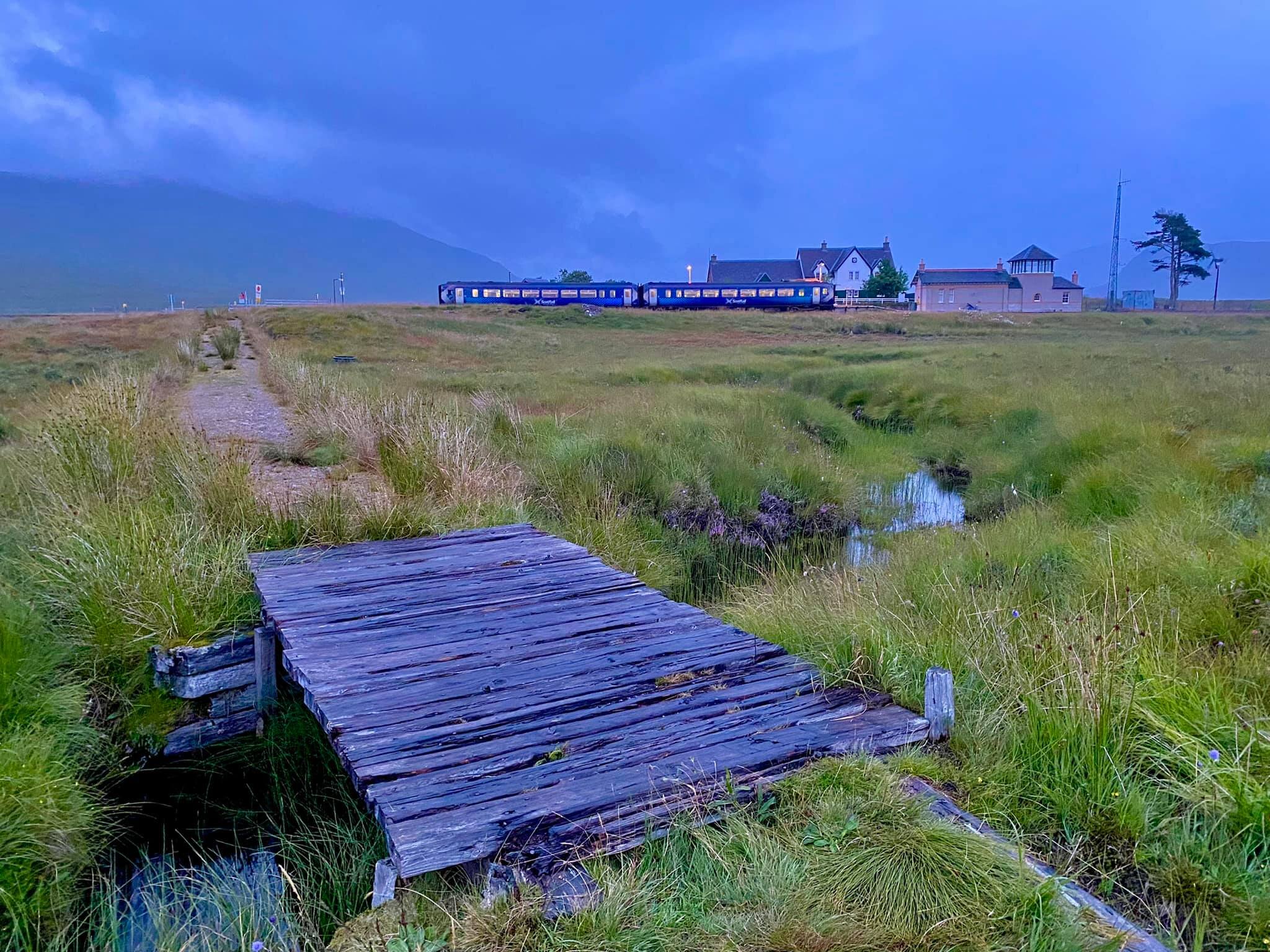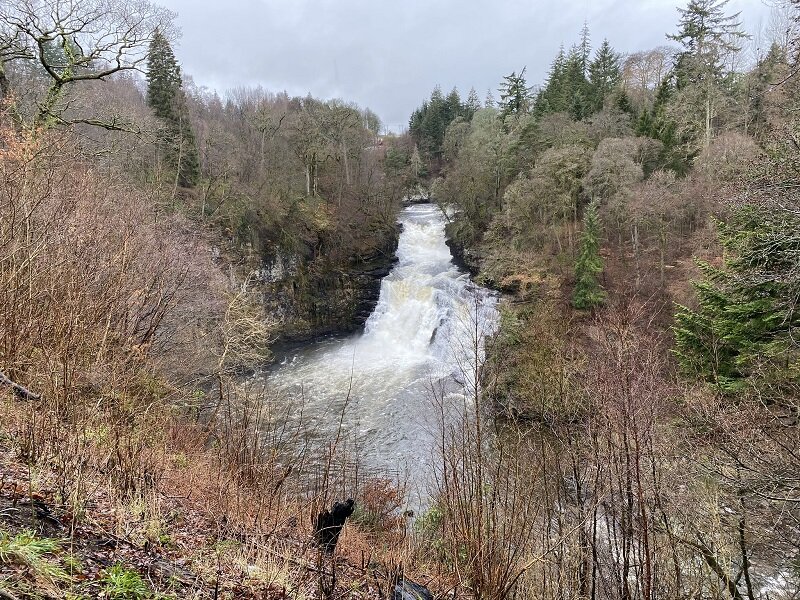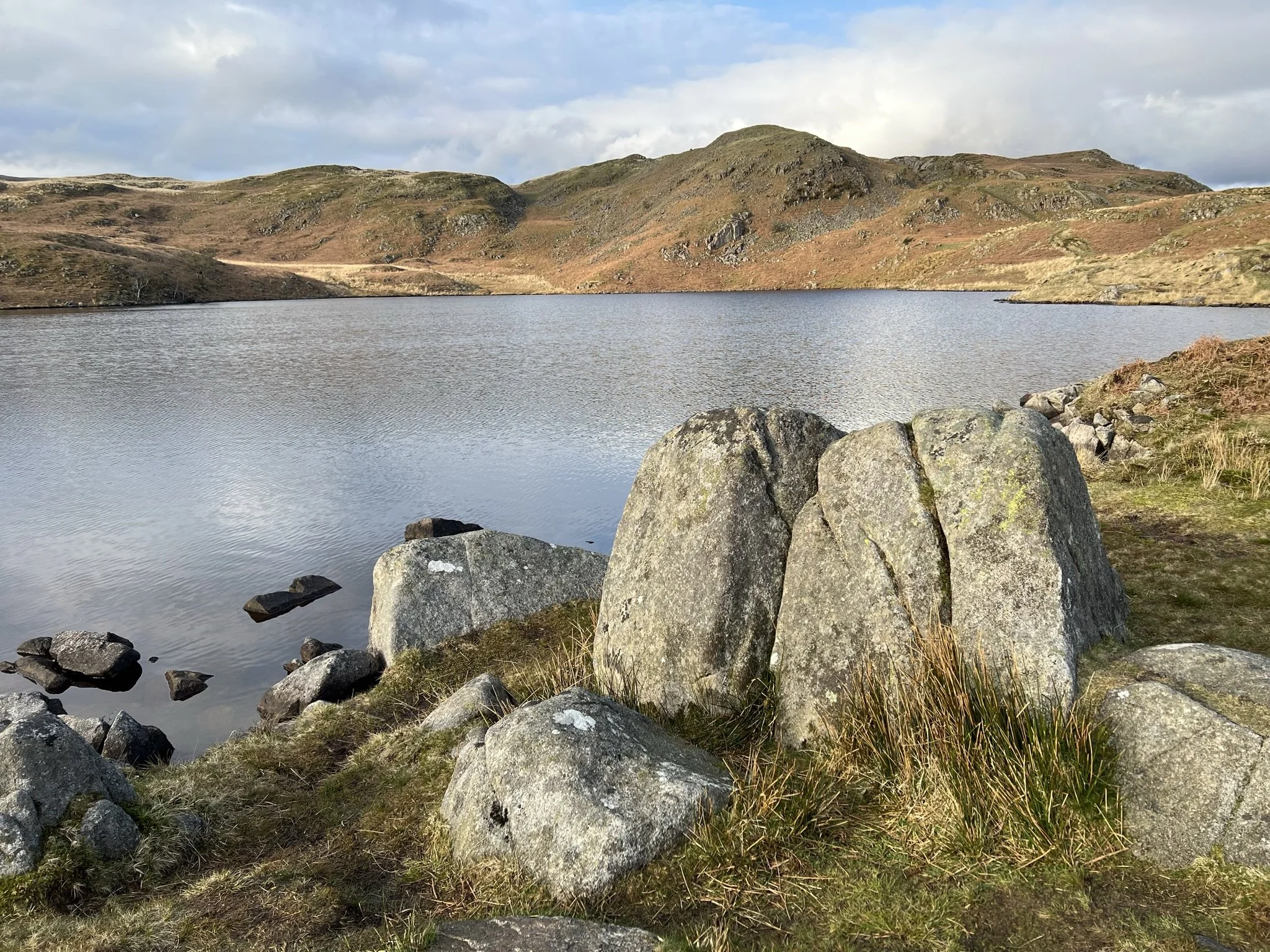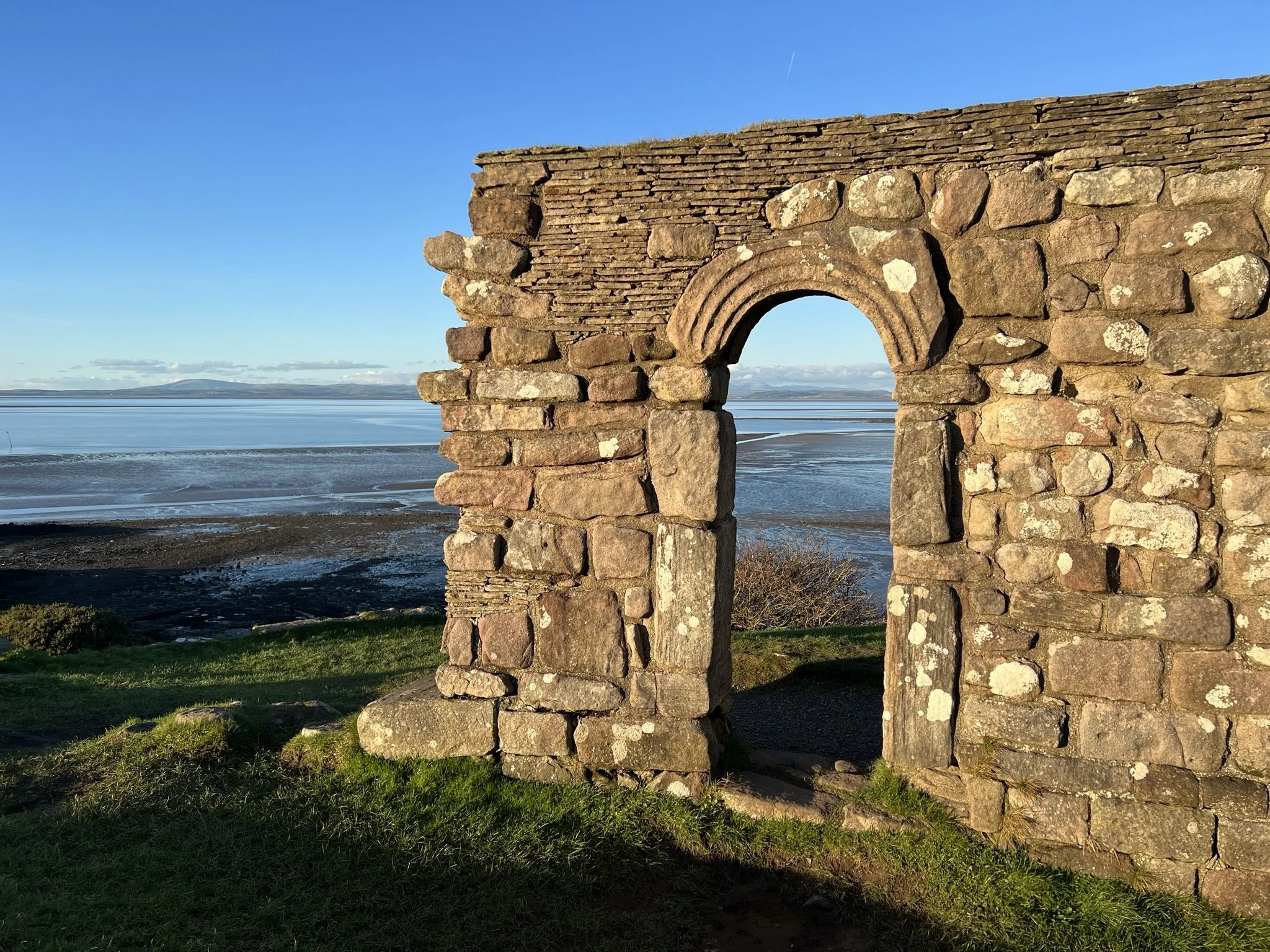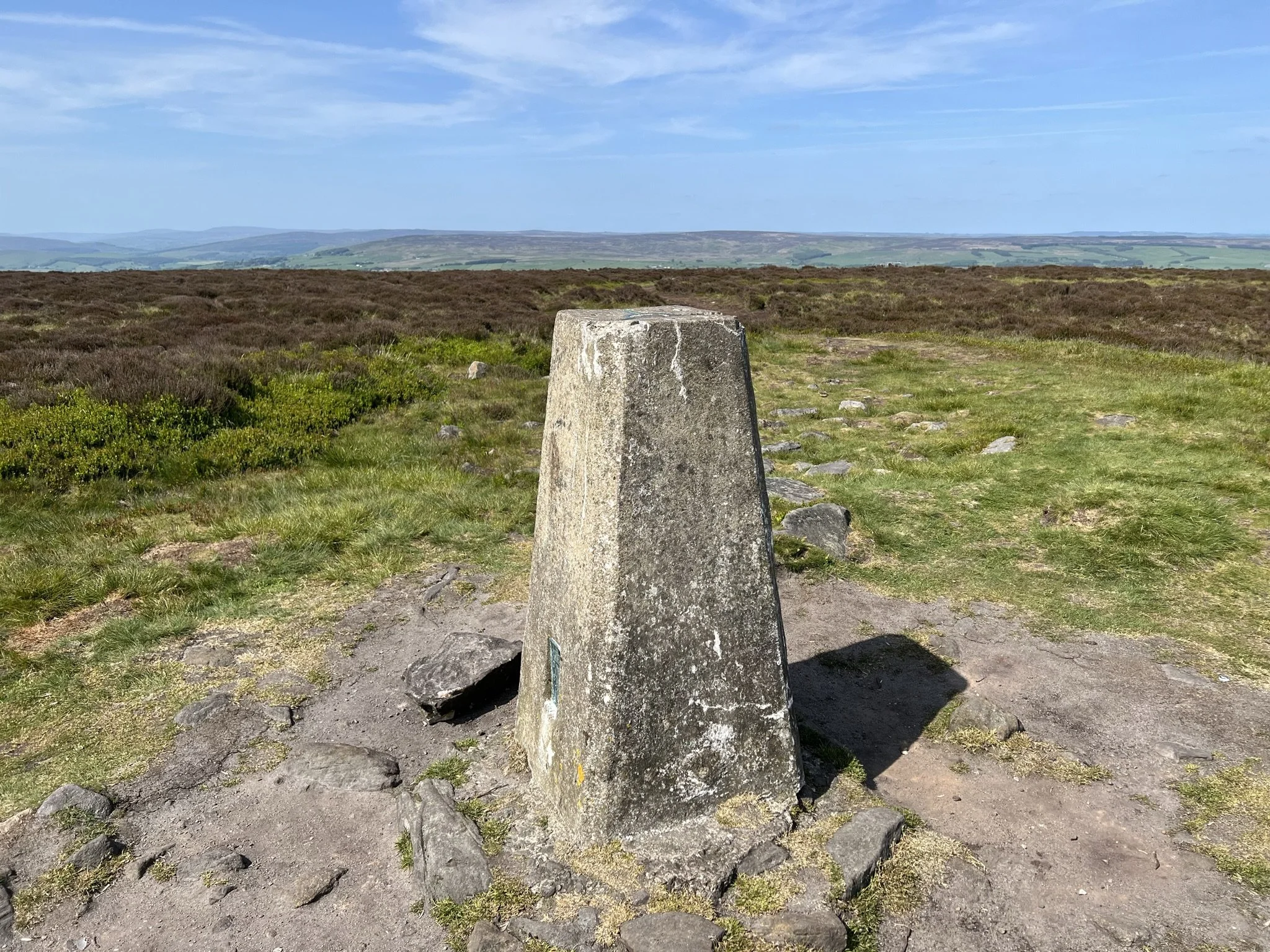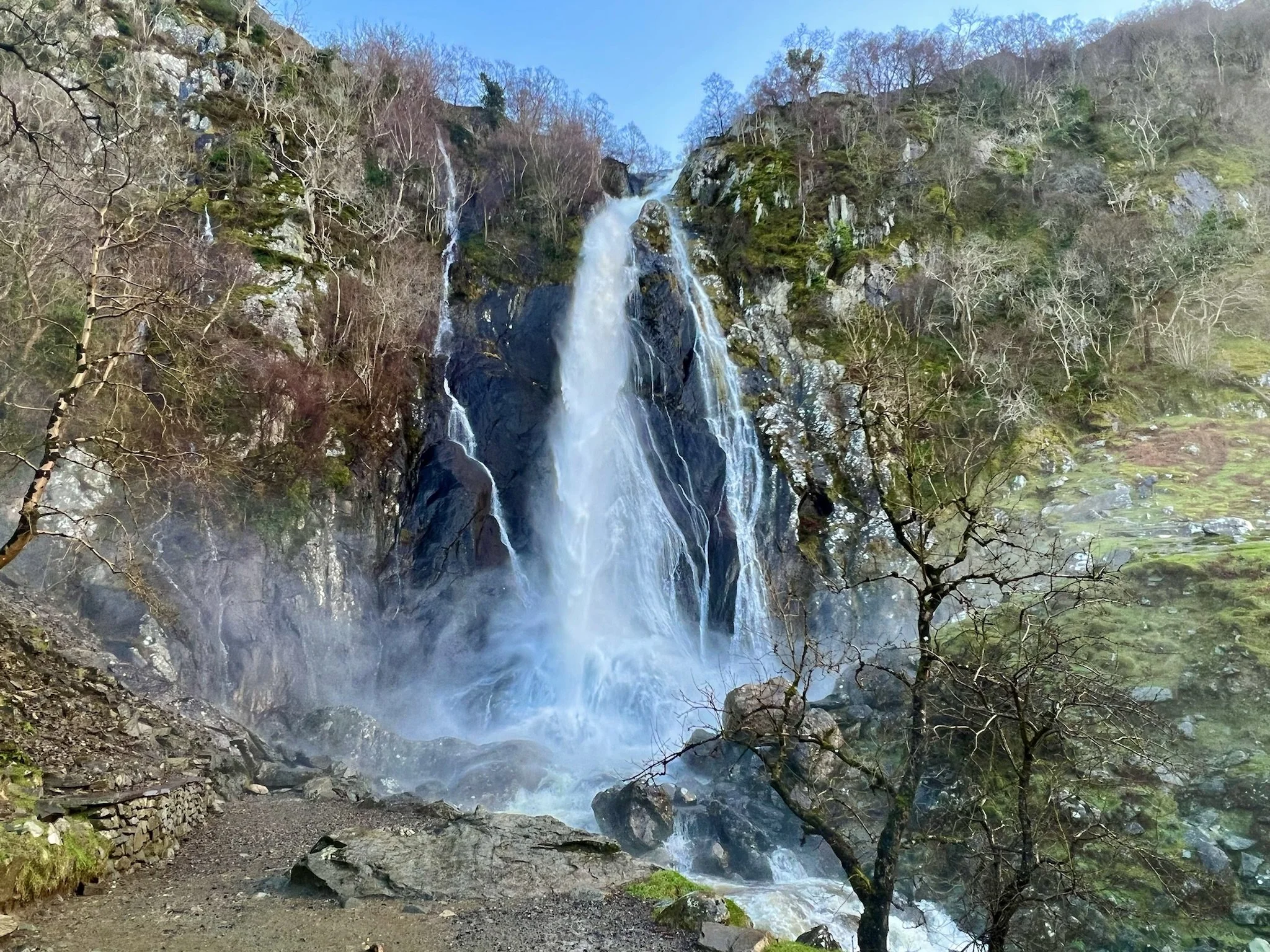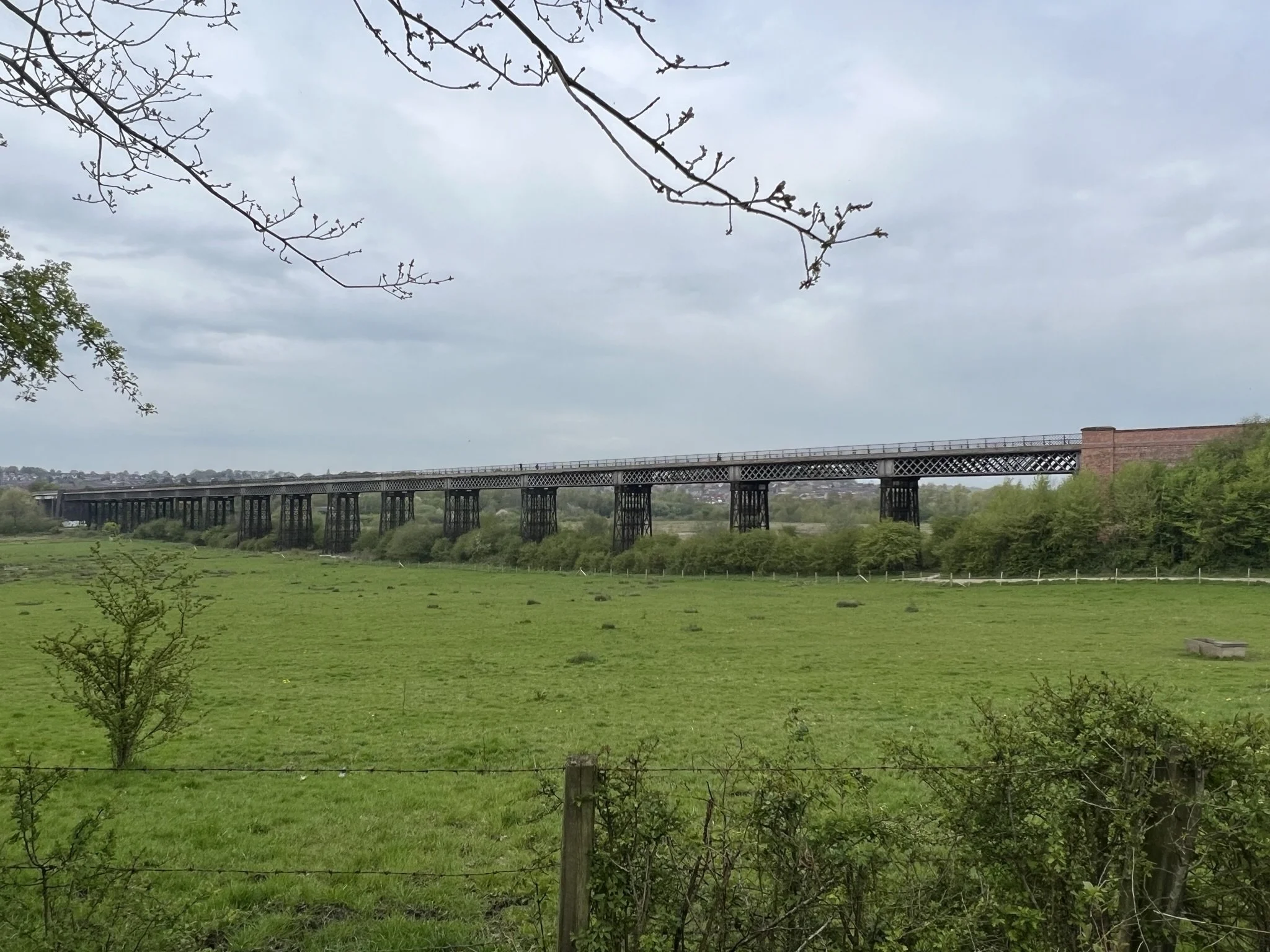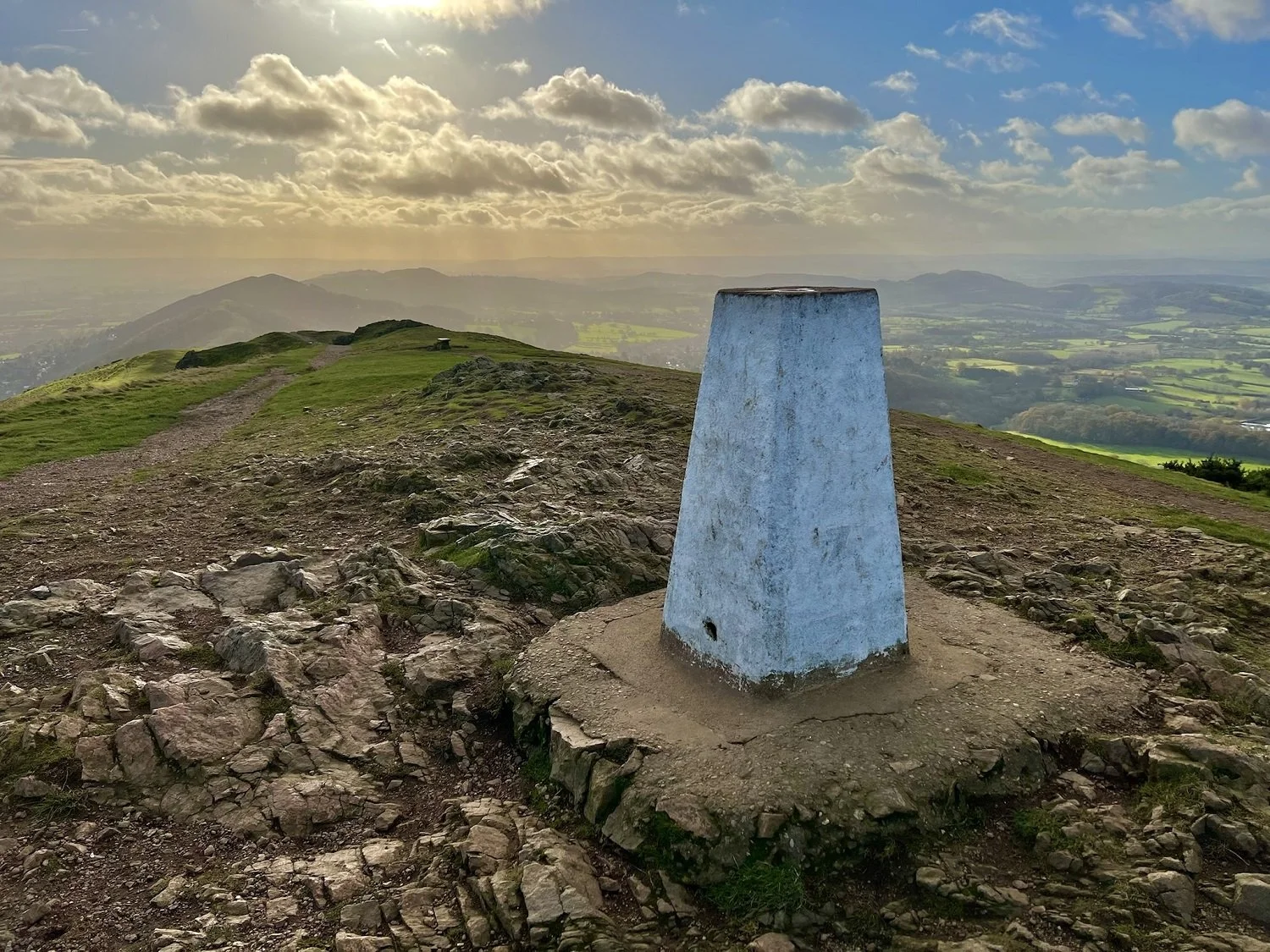As I write, we're approaching the end of the first week of the Community Rail Network's 2023 "days out by rail" campaign.
The theme for week one is "wonderful walks", so I thought I would share 12 of my favourite walks that you can do straight from the station platform. There's no particular theme beyond that, but of course the locations chosen reflect my own walking history. Let's go!
Beinn na Lap from Corrour
At 408m above sea level, Corrour is the highest mainline station in the UK. Located at the heart of Rannoch Moor, it is also ten miles from the nearest public road, so there are few better places to start a walk by train. Nearby Beinn na Lap reaches a summit height of 935m and provides fantastic views over the Moor as well as nearby Loch Ossian. The walk itself is a steady climb from near the western fringes of the loch, and the high start point makes this one of the more straightforward ascents of a "Munro peak". It's just over 11km (almost 7 miles) out and back from the station, with around 600m of ascent.
Read more about climbing Beinn na Lap and Corrour station.
Corrour is served by Scotrail services on the West Highland Line as well as Caledonian Sleeper services to and from Fort William. Please check the train times carefully as this is one place you really don’t want to get stranded.
Loch Ossian
The Falls of Clyde
It's just over a mile downhill from Lanark station to the wonderful UNESCO-listed mills at New Lanark. From there, three further miles of mostly gentle woodland walking will take you to the far falls at Bonnington Linn and back again. The jewel of the walk is the cascade at Corra Linn, described by Wordsworth as "the Clyde’s most majestic daughter".
Read more about the Falls of Clyde and about New Lanark.
Lanark station is served by regular Scotrail services from Glasgow Central. A daytime bus runs to New Lanark from the station should you wish to shorten the walk distance.
Corra Linn
The other Blea Tarn - a hidden gem of Eskdale
There are three Blea Tarns in the Lake District. There's also a Blea Water and a Bleaberry Tarn for good measure. The best known Blea Tarn sits in a small hanging valley between Great Langdale and Little Langdale. Another is found high on the boggy expanse between Ullscarf and Armboth Fell in the central fells. The third Blea Tarn is perched above Eskdale, only a few hundred yards from the valley road but completely hidden from it. Viewed from the adjacent slopes of Blea Tarn Hill to the east, it offers an unparalleled tarn-and-sea view as well as (weather permitting) unspoiled peace and stillness.
The quickest way up to the tarn, which sits just above the 200m contour, is to follow the zig-zag path up from the Ravenglass and Eskdale Railway's Beckfoot station and then retrace your steps. The more interesting route is to complete the 3.5 mile circular route starting at Dalegarth station or in Boot village, leaving the views from the zig-zags for the descent.
Dalegarth and Beckfoot are served by the minimum gauge Ravenglass and Eskdale Railway, sometimes known as "La'al Ratty". Visit their website for timetable details. The RER connects with mainline Northern Railway services at Ravenglass.
Blea Tarn (Eskdale)
Orrest Head
There's not really any original way to write about how Orrest Head was Alfred Wainwright's first glimpse of the Lake District. I tried and failed when I first wrote about this walk back in January 2020.
The world has changed since I wrote that piece, but the walk has not. It is still a straightforward walk direct from Windermere railway station, with a breathtaking panorama over Windermere and Langdale. It's around 3.5km to the top with about 100m of climbing, and there is an accessible "miles without stiles" route that is suitable for most scooters, wheelchairs, and pushchairs.
Northern Railway provide an hourly service to Windermere. Most services shuttle to Oxenholme for main-line connections, but some services continue on to Lancaster, Preston, and Manchester.
Orrest Head viewpoint
Arnside Knott
At just 159m tall but dropping away to almost sea level on every side, Arnside Knott is the lowest "Marilyn" in England. Marilyns are hills with a topographic prominence of at least 500 feet, or roughly 150m metres. This relative isolation provides wide-ranging views across Morecambe Bay, and on a clear day the high fells of the Lake District are well seen from across the Kent Estuary. A particular highlight is the view down to the railway viaduct at Arnside. There are a labyrinth of paths around the Knott - an easy-paced circular route from station to summit with a return on the promenade will be around 5km or 3 miles with some moderate climbing.
Click here to read more about Arnside Knott.
Arnside station is served by regular Northern Railway services between Lancaster and Barrow. Some trains continue south to Preston and Manchester Airport, and there are also some through services to Carlisle via the Cumbrian Coast Line.
Kent Estuary from Arnside Knott
Heysham Head
St Patrick's Chapel at Heysham Head is an underexplored gem, and it is a relatively straightforward coastal walk from the train. There's a fine view of the nearby headland and - similar to Arnside Knott - the high fells of the Lake District provide a fine vista when the weather is clear.
There's only one train per day to Heysham Port station, which connects with the ferry to the Isle of Man. If you time it right, you can undertake a lovely linear walk via Half Moon Bay and then onwards along the promenade back to Morecambe - the trickiest part of the walk is escaping the port at the start of the walk. Half Moon Bay itself is well worth a nosy, including a visit to Anna Gillespie's interesting sculpture, "SHIP" - although for views it is best to keep your eyes north, away from the power station.
If the lone Heysham service (which leaves around lunchtime) is not convenient, a gentle but longer stroll out-and-back along the prom is still a great option. This can be expanded to take in the sights at the heart of Morecambe, including the Eric Morecambe statue and the refurbished art-deco Midland Hotel.
Heysham Port has one train per day, leaving around lunchtime (exact departure time varies depending on the day of the week). Morecambe station has a regular service with main-line connections at Lancaster.
St Patrick’s Chapel, Heysham Head
Ilkley Moor
Where hast thou been since I saw thee, I saw thee?
Ilkley Moor might be most famous as the inspiration for the unofficial anthem of Yorkshire, but it is a also a great walk. The moor looms above the town of Ilkley, which makes it easily accessible from the railway station. There's one steep pull up to the moorland plateau, which comes early in the walk. After that, it is a steady moorland plod - some sections may become very wet after poor weather, but many have been paved with slabs to avoid the worse of the bog.
A modified out-and-back of around 6.5 miles is enough to catch all of the highlights of the moor. This includes the trig pillar at the summit, the "twelve apostles" stone circle, and the rock formations at the Cow and Calf. You can also pass by Ilkley Tarn on the descent, which was created by the Victorians as a large ornamental pond.
Ilkley is served by regular Northern Railway services to Leeds and Bradford (Forster Square).
Ilkley Moor summit trig pillar
Delamere Forest
Delamere station is perfectly located to access the myriad of Forestry England trails through Delamere Forest. I'd recommend combining two of the most popular marked trails.
Firstly, climb south up to the Old Pale viewpoint, where it is said you can see seven different counties from the top of the hill. It's a short, moderate climb with a couple of steeper sections. For a little extra adventure, seek out the nearby trig pillar, which ironically takes a bit of effort to stumble across. Secondly, follow the Blakemere Trail around the wetlands of Blakemere Moss. The combined route is between five and six miles, depending on whether you want to follow the full loop around the Moss. Click here to see my route on Strava, or download the Forestry England trail map.
Northern Railway services from Manchester to Chester via Northwich call at Delamere station. There's an hourly service on weekdays and Saturdays, and the Sunday trains run every two hours.
Delamere Old Pale
Little Woolden Moss
If you've never been to Irlam station house, you are in for a treat. It has been beautifully restored and now serves as a cafe, restaurant, and bar - with more than enough memorabilia both inside and out to call it a mini-museum. It is a delight.
Irlam station is also the starting point for the 10th stage of the Salford Trail - a long flat walk out onto Chat Moss, including the restored lowland bog at Little Woolden Moss. The full trail stage is seven miles - it is pan flat but some sections may be boggy underfoot. If this is too much, you can cut the walk short at Little Woolden Moss. You can also access a reversed version of stage nine of the trail from the same starting point - this takes you across a different section of the mosslands and back towards Eccles.
During lockdown I visited Little Woolden Moss to make a video - you can watch that video here.
Irlam station is served by regular Northern Railway services between Manchester and Liverpool via Warrington.
Little Woolden Moss
Rhaeadr Fawr / Aber Falls
Around two miles south of the village of Abergwyngregyn in Gwynedd, the Afon Goch tumbles down into the valley, creating the magnificent Rhaeadr Fawr (literally "Big Waterfall", and usually referred to as Aber Falls in English). I was fortunate enough to visit it in spate in midwinter, and it is probably the most impressive waterfall I've seen in the UK.
The valley is easily accessible on public transport, with Abergwyngregyn well served by local buses travelling between Bangor and Llandudno. If you're looking for a longer and more varied day out, you can combine this with a section of the Wales Coast Path, alighting the train at Llanfairfechan and walking along the coast to Abergwyngregyn.
From the village, there are two main routes to the falls. The first runs directly along the valley, and the second turns the walk into a circular by climbing onto the lower slopes of nearby Moel Wnion to the west. This gives a different perspective on Rhaeadr Fawr as well as a great view of nearby Rhaeadr Fach, which taken alone is still an impressive cascade.
Llanfairfechan is served by Transport for Wales services along the North Wales Coast line.
Rhaeadr Fawr / Aber Falls
Bennerley Viaduct
The huge wrought-iron Bennerley Viaduct, often referred to as the "Iron Giant", carried the trains of the Great Northern Railway over the wide valley of the River Erewash. It is a quarter of a mile long and is the longest wrought iron viaduct remaining in the country. The bridge hasn't carried trains since 1968, but it took a long campaign by local volunteers to restore it as a walking and cycling route - finally reopening to the public in January 2022.
The viaduct lends itself to a lovely circular walk from Ilkeston station. This loop of just under three miles can be completed comfortably in around an hour - heading north on the Erewash Canal, crossing the viaduct, and returning via the towpath of the disused Nottingham Canal. In addition to the views from the viaduct itself, the return path passes the viewing area to enable you to enjoy the bridge from afar. Click here to view the route on Strava.
Ilkeston station is served by hourly Northern Railway services between Nottingham and Sheffield - northbound services often continue on to Leeds.
Bennerley Viaduct
Worcestershire Beacon
The long ridge line of the Malvern Hills dominates the skyline of the spa town of Great Malvern. At 425m tall, the Worcestershire Beacon marks not only the high point of the ridge but also the highest point in the whole of Worcestershire.
As the crow flies, there's less than a mile from Great Malvern station and the summit of the Beacon, and there are a myriad of paths rising from the town to the ridge-line - with the most direct routes being unremittingly steep. Longer and marginally gentler routes are also available.
As a county top surrounded by much lower ground, the views from the summit are extensive, and the beautiful 1897 toposcope (built to celebrate Queen Victoria's diamond jubilee) helps visitors to interpret the view.
Great Malvern is served by regular West Midlands Railway services to Birmingham and Hereford, supplemented by Great Western Railway services to more exotic locations like Oxford and London.
